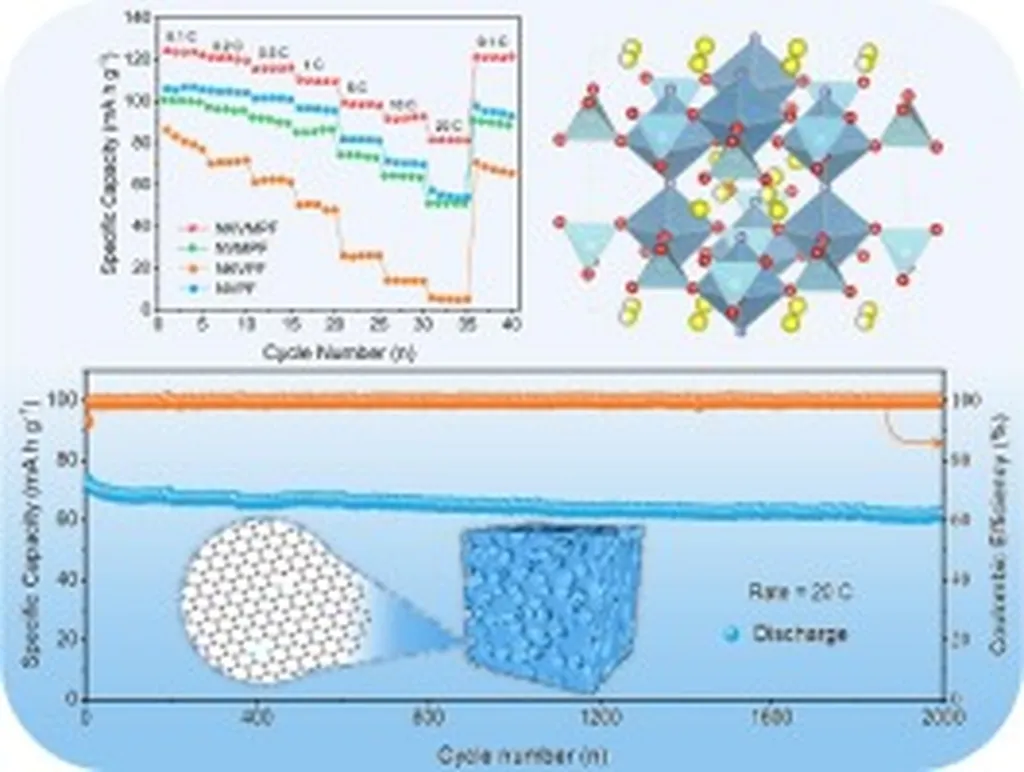In the quest for high-performance energy storage solutions, researchers have long been captivated by the potential of sodium-ion and potassium-ion batteries. These alternatives to lithium-ion batteries promise cost-effectiveness and abundance, but they come with their own set of challenges. A recent study published in Sustainable Materials (SusMat) offers a novel approach to overcoming these hurdles, with implications that could reshape the energy storage landscape.
At the heart of this research is tin sulfide (SnS2), a material known for its large interlayer spacing and high theoretical capacity. However, its practical application has been hindered by issues such as sluggish kinetics, volume expansion, and low conductivity. Enter Yiyi Wang, a researcher from the Engineering Research Center of Polymer Green Recycling at Fujian Normal University in Fuzhou, China. Wang and her team have developed a synergistic engineering route that combines environmentally friendly chlorella with sulfurized polyacrylonitrile (SPAN) to create a green-doped, dual-mode confinement SnS2-based anode.
The innovation lies in the dual-mode confinement strategy. The SPAN matrix acts as a stabilizing agent, preventing SnS2 agglomeration and enhancing charge transfer. Meanwhile, phosphorus (P) doping accelerates the “solid-solid” conversion kinetics, a critical process in the battery’s charge-discharge cycle. “The SPAN matrix not only improves the structural stability but also enhances the charge transfer, making the anode more efficient,” Wang explains.
The results are impressive. The SnS2-P-SPAN anode demonstrates outstanding sodium/potassium storage performance across a wide temperature range, from -40°C to 70°C. This means the batteries can deliver high reversible capacities, excellent rate capability, and exceptional long-term cycling stability, even in extreme temperatures. “This wide temperature range is crucial for applications in electric vehicles and grid storage, where temperature fluctuations are common,” Wang notes.
The practical potential of this strategy was further verified in a full-cell configuration using a SnS2-P-SPAN//NaNi0.4Fe0.2Mn0.4O2 setup. The full cell showed high capacity and long durability, maintaining 241 mAh g−1 over 800 cycles at 0.5 A g−1 at 25°C, 159 mAh g−1 over 400 cycles at 60°C, and 105 mAh g−1 over 800 cycles at -15°C. These results underscore the robustness and reliability of the developed anode material.
The research also delves into the electrochemical mechanisms of SnS2-P-SPAN through comprehensive tests and analyses. Theoretical calculations reveal that P-doping enhances the adsorption capacity of sodium ions and discharge products, further improving the battery’s performance.
This work, published in Sustainable Materials, which translates to English as Sustainable Materials, opens new avenues for developing promising yet imperfect electrode materials in the field of energy storage. The implications are vast, particularly for the energy sector, where the demand for efficient, cost-effective, and durable energy storage solutions is ever-growing. As Wang and her team continue to refine their approach, the future of sodium-ion and potassium-ion batteries looks increasingly bright, paving the way for a more sustainable and energy-efficient world.

